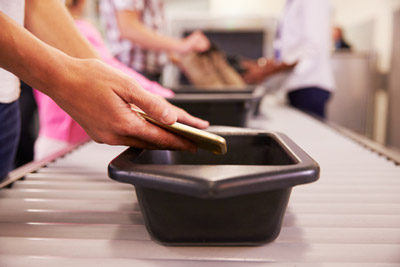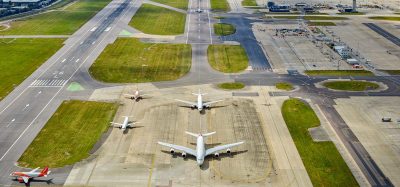Changi Airport Group trials new security screening technologies
- Like
- Digg
- Del
- Tumblr
- VKontakte
- Buffer
- Love This
- Odnoklassniki
- Meneame
- Blogger
- Amazon
- Yahoo Mail
- Gmail
- AOL
- Newsvine
- HackerNews
- Evernote
- MySpace
- Mail.ru
- Viadeo
- Line
- Comments
- Yummly
- SMS
- Viber
- Telegram
- Subscribe
- Skype
- Facebook Messenger
- Kakao
- LiveJournal
- Yammer
- Edgar
- Fintel
- Mix
- Instapaper
- Copy Link
Posted: 25 April 2016 | Katie Sadler, Digital Content Producer, International Airport Review | No comments yet
Changi Airport Group (CAG) has revealed it is conducting trials on new security screening technologies in order to improve efficiency and processes at screening checkpoints.


Changi Airport Group (CAG) has revealed it is conducting trials on new security screening technologies in order to improve efficiency and processes at screening checkpoints.


New security screening technologies will be trialled at two boarding gates within Changi Airport Terminal 3 until June 2016. The solutions are part of CAG’s efforts to deliver a better airport experience for passengers through improved efficiency and processes.
New security screening technologies
CT security screening for hand-carry luggage
The first trial involves the use of a new computed tomography (CT) security screening equipment to screen hand-carry luggage at the boarding gates before passengers board their flights. Presently, passengers have to take electronic devices such as laptops and tablets out from their hand-carry luggage and place them on a separate tray for screening. Using advanced 3D screening technology, the new CT screening equipment allows passengers to keep such electronic devices in their hand-carry luggage, thereby saving time.
Automated Tray Return System
To improve the process, the CT trial will also test a new automatic tray return system. With this automated system, trays can be presented to two passengers simultaneously at the start of the screening belt, enabling both to deposit their bags at the same time. The trays are automatically returned to the line after each screening cycle is completed, removing the need for security screening officers to manually bring the trays back to the start of the screening belt. This will improve screening efficiency and reduce waiting times for passengers.
Bags that require further checks will be automatically routed to a separate channel for follow-up by security officers.
Enhanced body scanning
Currently, departing passengers at Changi Airport are screened using walk-through metal detectors. To improve screening capabilities, CAG is trying out a body scanner machine that uses millimetre wave technology to detect both metallic and non-metallic items. Passengers, after removing items in their pockets or on their body, will be required to walk into the body scanner and be scanned, a process that takes a few seconds. The data will then be analysed by a computer algorithm. If a concealed item is detected, a non-invasive outline image indicating the item’s location will be generated automatically. This allows the security officer to zoom in on the identified area to check the item, which would be more efficient. If nothing is detected, a green screen with an ‘OK’ appears before the passenger moves on.
According to the airport, the millimetre wave technology poses no known health and safety risks as it utilises a very low-power non-ionising form of electromagnetic technology. The amount of electromagnetic radiation emitted by millimetre wave security scanners is many times smaller than that emitted by a mobile phone.
“The data and passenger feedback we collect from the trials will help us assess the effectiveness and operational efficiencies of these new systems”
Mr Alan Tan, CAG’s Vice President of Aviation Security said: “At Changi Airport, we take safety and security seriously and are committed to maintaining the highest standards. We work very closely with the authorities to review and adopt new advanced technologies and process innovation to improve security screening and enhance the passenger experience at Changi.
“The data and passenger feedback we collect from the trials will help us assess the effectiveness and operational efficiencies of these new systems, before we ascertain their suitability for implementation at the airport.”

















